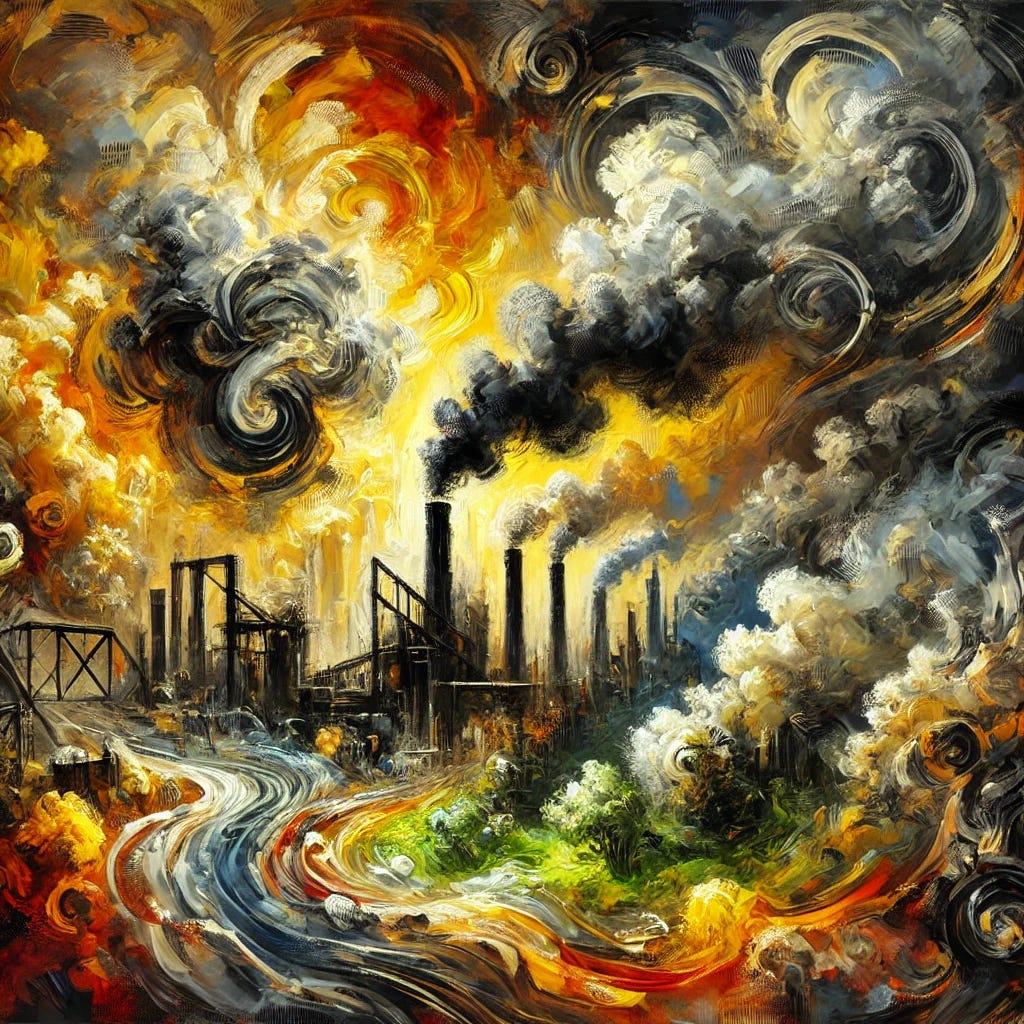I hadn’t heard of tartrazine until Bobby highlighted it in this campaign ad.
I thought it worthy of a stack.
The origin story of tartrazine is not dissimilar to the origin story of seed oils.
It was an industrial byproduct (fancy language for “waste”) that the oligarchy decided should find its way into the food supply.
Origin Story
The origin of tartrazine (Yellow Dye #5) can be traced back to the industrial byproducts of coal processing. About a century ago, when coal was converted into coke for use in blast furnaces, it produced a waste product called "colar." This sludge-like substance was considered an obnoxious industrial byproduct, and industries were constantly seeking ways to dispose of it. One early method of dealing with colar was to use it in road paving.
The turning point came when a British chemist made a significant discovery. He found that colar could be used to create fabric dyes. This breakthrough led to the idea of using similar compounds as food dyes. Food manufacturers saw an opportunity in this new application. They began using the dye to mask the discoloration of low-quality foods, making them appear more appealing to unsuspecting customers.
While tartrazine was originally derived from coal tar, today it is synthesized from petroleum. This change in source material hasn't made the dye any safer for consumption. Bobby presents this history as part of a larger argument about the dangers of food additives and their origins in industrial waste products.
I’d like to take a moment to listen to Bob Moran, again, on the power structure and its relationship to its subjects.
Here is a summary of Bobby’s video:
Americans have lower life expectancy compared to other developed countries, a trend that began in the 1990s.
The U.S. has seen increases in chronic diseases such as obesity, cancer, diabetes, kidney disease, Alzheimer's, heart disease, and autoimmune disorders.
Maternal and infant mortality rates in the U.S. are the highest among developed countries.
Bobby, in the ad, attributes much of this health decline to harmful additives in the American diet.
[Unbekoming: The truth is that most of the health decline is due to the most aggressive mass vaccination/poisoning campaign in the world, and in human history. After that, sure, the poison in the food is adding further fuel to the fire. Injecting versus ingesting poison is incomparable. One must contend with your defences while the other bypasses them.]
Tartrazine (Yellow Dye #5) is highlighted as an example of a harmful food additive, originally derived from coal tar and now from petroleum.
Tartrazine causes various health issues, including tumors, asthma, developmental delays, neurological damage, ADD/ADHD, hormone disruption, gene damage, anxiety, depression, and intestinal injuries.
Many common foods, including those marketed as healthy or for children, contain tartrazine and other potentially harmful additives.
Removing these chemicals from food would lead to immediate health improvements for Americans, including better focus, less anxiety, easier learning for children, weight loss, more energy, fewer tumors, and longer lives.
Some countries require warning labels on foods containing certain additives like tartrazine, particularly regarding potential effects on children.
There is a connection between food additives and increased use of medications like Adderall, Prozac, and asthma inhalers.
Government agencies are approving harmful food additives, due to industry influence.
Cytotoxic and mutagenic effects of the food additive tartrazine on eukaryotic cells | BMC Pharmacology and Toxicology | Full Text (biomedcentral.com)
The study found that tartrazine (Yellow No. 5), a common food dye, can be harmful to cells. Using different tests on plant and yeast cells, researchers observed that tartrazine could cause cell damage and potentially lead to genetic mutations. This suggests that tartrazine may be more toxic than previously believed.
The main takeaway is that even though tartrazine is widely used in food products, it may pose health risks at certain levels or over time. This research calls for more caution and further investigation into the safety of this popular food additive.
Clinical Spectrum of Adverse Reactions to Tartrazine: Journal of Asthma: Vol 22 , No 3 - Get Access (tandfonline.com)
The study highlights that tartrazine, a widely used food and drug additive, can cause adverse reactions, including hives (urticaria), swelling (angioedema), asthma, and hyperactivity. The paper reviews recent research on tartrazine's effects and provides guidance for doctors on how to best diagnose and manage patients who may be sensitive to this additive.
And lastly, I’d like to end with these wise words from Dr Thomas Cowan.
I appreciate you being here.
If you've found the content interesting, useful and maybe even helpful, please consider supporting it through a small paid subscription. While everything here is free, your paid subscription is important as it helps in covering some of the operational costs and supports the continuation of this independent research and journalism work. It also helps keep it free for those that cannot afford to pay.
Please make full use of the Free Libraries.
Unbekoming Interview Library: Great interviews across a spectrum of important topics.
Unbekoming Book Summary Library: Concise summaries of important books.
Stories
I'm always in search of good stories, people with valuable expertise and helpful books. Please don't hesitate to get in touch at unbekoming@outlook.com
For COVID vaccine injury
Consider the FLCCC Post-Vaccine Treatment as a resource.
Baseline Human Health
Watch and share this profound 21-minute video to understand and appreciate what health looks like without vaccination.




